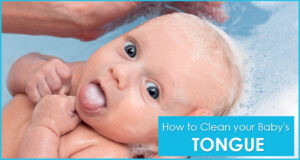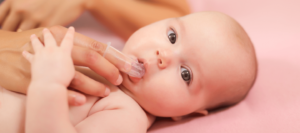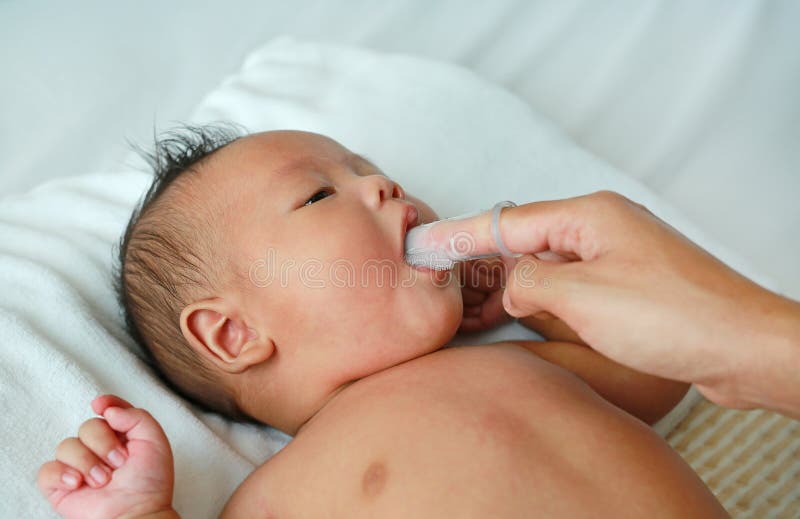Introduction
When you’re a new parent, everything feels like a new frontier—including cleaning your baby’s tiny tongue! While it might seem unnecessary, keeping your newborn’s tongue clean is essential for good oral hygiene and overall health. In this comprehensive guide, we’ll walk you through why tongue cleaning matters, the safest techniques to use, and tips to make it a seamless part of your baby care routine. Let’s dive in!
Why Cleaning a Newborn’s Tongue Is Important
Your newborn’s oral hygiene isn’t just about keeping their mouth clean—it’s about their overall well-being. Residue and buildup on the tongue, such as leftover milk or formula, can create an environment where bacteria thrive. This buildup can lead to:
- Oral Thrush: A fungal infection that appears as white patches on the tongue and inside the cheeks.
- Bad Breath: While rare in newborns, poor oral hygiene can still cause unpleasant smells.
- Feeding Issues: A coated tongue can interfere with taste and lead to feeding discomfort.
By cleaning your baby’s tongue regularly, you’re helping to prevent these issues and encouraging healthy oral habits right from the start.
When Should You Start Cleaning Your Newborn’s Tongue?
The best time to start cleaning your baby’s tongue is as soon as they are a few days old. Even if they only consume breastmilk or formula, residue can accumulate. Establishing this habit early ensures your baby is comfortable with the process as they grow.
What Causes White Coating on a Newborn’s Tongue?
Not all white coating is the same, and understanding the cause is crucial:
- Milk Residue: Common in breastfed and formula-fed babies. It appears as a thin, white layer on the tongue and is harmless.
- Oral Thrush: Thrush is thicker and doesn’t wipe away easily. It may require medical treatment, so consult your pediatrician if you’re unsure.
Supplies You’ll Need for Cleaning Your Baby’s Tongue
Before starting, gather these essentials:
- Soft, clean gauze or a baby-specific tongue cleaner
- Sterile water (boiled and cooled)
- A soft, damp washcloth
- Clean hands (always wash thoroughly before handling your baby’s mouth)

Step-by-Step Guide to Clean Your Newborn’s Tongue
Cleaning your baby’s tongue is a straightforward process. Follow these steps to do it safely:
Step 1: Wash Your Hands
Before starting, wash your hands with soap and water. This prevents introducing any germs into your baby’s mouth.
Step 2: Prepare Your Supplies
Soak a piece of soft gauze or a clean washcloth in sterile, cooled water. Wring it out so it’s damp but not dripping.
Step 3: Hold Your Baby Comfortably
Sit in a comfortable position and hold your baby securely in your arms. You can also place them on a flat, safe surface if that feels easier.
Step 4: Open Your Baby’s Mouth
Gently use one finger to open your baby’s mouth. Ensure your touch is light and calming to avoid startling them.
Step 5: Clean the Tongue
Wrap the damp gauze or washcloth around your finger. Gently rub your baby’s tongue in circular motions, starting from the center and moving outward.
Step 6: Inspect for Thrush or Buildup
While cleaning, check for any thick, white patches that don’t come off. If you notice these, consult your pediatrician.
Alternative Tools for Baby Tongue Cleaning
If gauze or a washcloth feels cumbersome, try these alternatives:
- Baby Finger Toothbrush: Specifically designed for infants, these are soft and gentle.
- Silicone Tongue Cleaner: A flexible option that is easy to sterilize and use.
Common Mistakes to Avoid
Cleaning your newborn’s tongue isn’t hard, but there are a few pitfalls to steer clear of:
- Skipping It Entirely: Neglecting oral hygiene can lead to thrush or bad breath.
- Using Harsh Tools: Avoid adult toothbrushes or rough materials that can hurt your baby.
- Forgetting to Check for Thrush: Regular cleaning is also an opportunity to spot early signs of infection.
How to Prevent Tongue Buildup
Prevention is easier than treatment! Here are some tips:
- Clean After Every Feed: Wiping your baby’s mouth after feeding helps remove milk residue.
- Hydration: Offer small amounts of water if your pediatrician approves, as this can rinse away residue.
What to Do If Your Baby Has Oral Thrush
If you suspect oral thrush, here’s what to do:
- Consult Your Pediatrician: Thrush often requires antifungal medication.
- Sterilize Feeding Tools: Bottles, pacifiers, and any feeding equipment should be thoroughly cleaned to prevent reinfection.
- Maintain Cleaning Routine: Keep cleaning your baby’s tongue to aid recovery.

FAQs About Cleaning a Newborn’s Tongue
1. Is tongue cleaning painful for newborns?
Not at all! As long as you’re gentle and use soft materials, your baby should feel comfortable during the process.
2. How often should I clean my baby’s tongue?
Clean your baby’s tongue at least once a day, preferably after feeding.
3. Can I use toothpaste for my newborn?
No, toothpaste is not necessary or safe for newborns. Stick to water and gauze or baby-specific tools.
4. What if my baby resists?
Make it a positive experience! Try singing or talking soothingly to distract them.
5. How do I differentiate thrush from milk residue?
Milk residue wipes away easily, while thrush is thick, and stubborn, and may cause redness or discomfort.
Conclusion
Caring for your newborn’s oral hygiene might feel daunting, but with the right tools and techniques, it’s a simple process that makes a big difference. Regular tongue cleaning not only prevents issues like thrush but also sets the stage for healthy habits as your baby grows. Remember, your little one depends on you for their well-being—so a clean tongue is just one more way to keep them happy and healthy.

